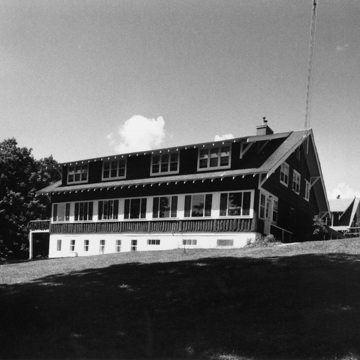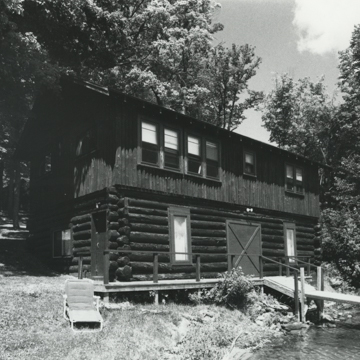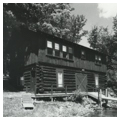In the last quarter of the nineteenth century, the Northwoods of Wisconsin experienced an influx of sportsmen seeking the restorative effects of the natural environment. Charles Hazen was first a steward at the Twin Lake Fishing and Hunting Club; then, in 1900, he founded his own fishing camp of three cabins on fifty-three acres. The following year, he erected Long Lake Lodge. Over the next decades, his resort evolved from a rustic fishing camp into a picturesque, full-service, American Plan resort that incorporated the main lodge, eleven cabins, and three hundred acres. The evolving clientele soon included extended families who spent the summer here in a tight-knit, communal atmosphere. Hazen vigorously promoted Vilas County as a winter recreation destination, as well, opening his lodge as early as 1924 for the winter season. By 1975, four generations of the Hazen family made it one of the oldest family-owned and -operated resorts in Wisconsin. In 1978, like many American Plan resorts, it was subdivided, and the cabins were sold as individual lots. Purchased by new owners in 1993, the lodge reopened as the Hazen Inn, a bed-and-breakfast. It retains the lodge and three original cabins.
Encompassing ten thousand square feet of Rustic living space, the main lodge is constructed of local tamarack logs, which were prized for their straight growth and rot resistance. The original two-story side-gabled portion has been joined on its open-gabled ends with two front-gabled additions, and shed dormers run the entire length of the roof. A fifty-foot-long enclosed porch spans the entire lake side of the building. The lodge’s spacious interior features exposed, peeled logs arranged vertically, with a massive fieldstone fireplace in the main gathering room. The interior walls are partially cedar lined, and each cabin has its own fieldstone fireplace. The intimate cabins are also Rustic log constructions, with saddle-notched joints and steeply pitched side-gabled roofs. In addition to the lodge and cabins, the Hazen Inn retains a landscape characteristic of an American Plan resort, one that attempted to maintain a high degree of recreational and agricultural self-sufficiency. A log barn stands at the entrance of Hazen Lane, and open green space includes an orchard, garden, tennis court, and wooden outbuildings. Past the row of cabins, a wooded slope leads down to the lakeside boathouse and picnic pavilion.





